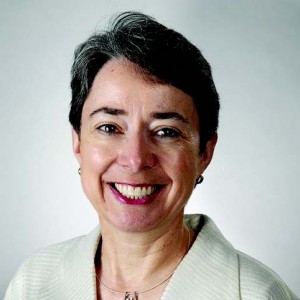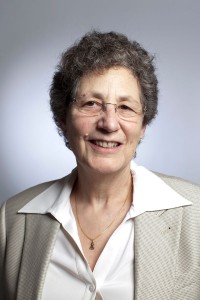 I’ve worked in the field of elder abuse prevention for the past 25 years and, sadly, I’ve heard many stories about elder abuse in our community. Our reluctance to face the consequences of our aging can mean that we put ourselves at risk not only for the typical challenges of aging, but also for the possibility of abuse, neglect or domestic violence in later life.
I’ve worked in the field of elder abuse prevention for the past 25 years and, sadly, I’ve heard many stories about elder abuse in our community. Our reluctance to face the consequences of our aging can mean that we put ourselves at risk not only for the typical challenges of aging, but also for the possibility of abuse, neglect or domestic violence in later life.
Dr. Atul Gawande in his new book Being Mortal poses several difficult questions for Americans about our aversion to talking about, and planning for, the inevitability of aging and its concomitant losses. LGBT baby boomers are as reluctant as our straight brothers and sisters to have the difficult conversations about aging, even though the consequences of not having them may be more serious for us.
The research on maltreatment in the LGBT elder population is scarce, but we do know that in the general population of those 60+ years, 1 in 10 individuals will experience abuse or neglect. Some factors that may make LGBT elders more vulnerable to maltreatment are:
Increased risk of isolation
LGBT seniors are more likely than heterosexual seniors to live alone and are less likely to have a family member to turn to when they are ill or in need of assistance. Our chosen families tend to be similar in age and may be experiencing their own aging challenges and therefore might not be available to assist us in our time of need.
Fear of discrimination
Even though Adult Protective Services (APS) is charged with honoring the self-determination of clients while working with them to reduce maltreatrement, LGBT seniors still are reluctant to access these services.
Poor health
Studies report that LGBT older adults and seniors have higher rates of chronic illness as well as higher rates of drug/alcohol abuse.
Limited financial resources
According to recent studies, LGBT seniors experience high rates of poverty. LGBT senior couples who are not married receive fewer benefits than married couples, leaving many of us with more limited financial resources to arrange for appropriate care and appropriate caregivers.
If it takes a village to raise a child, it takes another kind of village to help someone live out their life with independence and dignity. Dr. Gawande points out that if we live in denial, and never have the difficult conversations, we could find ourselves living outside of that village. The following are some true stories (names changed) involving gay elders in San Francisco; they illustrate some of the factors mentioned above:
Mary and Jean lived together for more than 50 years. Mary developed dementia and Jean took care of her by herself for several years until Jean fell ill from exhaustion. Jean was resistant to reaching out for help. Soon she was no longer able to take good care of Mary, and both women started to neglect themselves. When Jean called 911 one night because Mary had fallen, paramedics found both women in their home in a terrible state. They were transported to the hospital and never returned to their home.
Seth and Joe broke up 12 years ago, but when Seth needed care at home, he asked Joe for assistance. When a neighbor got suspicious about never seeing Seth out and about, they called Adult Protective Services who came out to check on him. Joe refused to let the APS worker see Seth, but later, after APS had called the police, he relented. Seth was found severely dehydrated and malnourished. Later it was determined that Joe had transferred all of Seth’s money into his own bank account.
Gene met a younger man. A few months after their relationship started, Gene and his new lover went to Gene’s attorney’s office and Gene made a new will. In that will, he left everything to the new lover, cutting out his two adult children with whom he had good relationships. Several weeks later, Gene fell down the stairs in his home. The lover later told police that he had found Gene’s body in the early hours of the morning, but had not called anyone at that time because he was clearly dead.
The signs of elder abuse can be extremely overt (e.g., a bruise on the face) or very subtle (e.g., using undue influence to convince someone to change their will). The National Center on Elder Abuse has a wealth of information about signs, research, and resources (www.ncea.aoa.gov). While one sign does not necessarily indicate abuse, here are some indicators that there could be a problem:
I encourage all of us to start talking about, and planning for, our own aging. There are many excellent and culturally competent services that are available for older LGBT individuals in our area. If you wish to report about someone who is a victim of abuse, call Adult Protective Services. Their services are confidential, and in the Bay Area they are LGBT-friendly. The Department of Aging and Adult Services also offers a Senior Information and Referral Hotline that can provide information about services that can be put in place to prevent abuse, neglect or self-neglect from happening in the first place. To find them—for yourself or a loved one—go to the Department of Aging and Adult Services website at http://www.sfhsa.org/DAAS.htm or call them at (415) 355-6700. They are there and waiting to have a conversation with you.
Mary Twomey, MSW, is Program Manager for the Aging Initiative at the University of California, Berkeley, School of Social Welfare. Previously, Mary was co-director of both the National Center on Elder Abuse and the Center of Excellence on Elder Abuse and Neglect at UC Irvine. From 2000–2007, she ran a local multi-disciplinary Consortium for Elder Abuse Prevention in San Francisco.
 Dr. Marcy Adelman oversees the Aging in Community column. For her summary
Dr. Marcy Adelman oversees the Aging in Community column. For her summary
of current LGBT senior challenges and opportunities, please go to: sfbaytimes.com/challenges-and-opportunties
Recent Comments